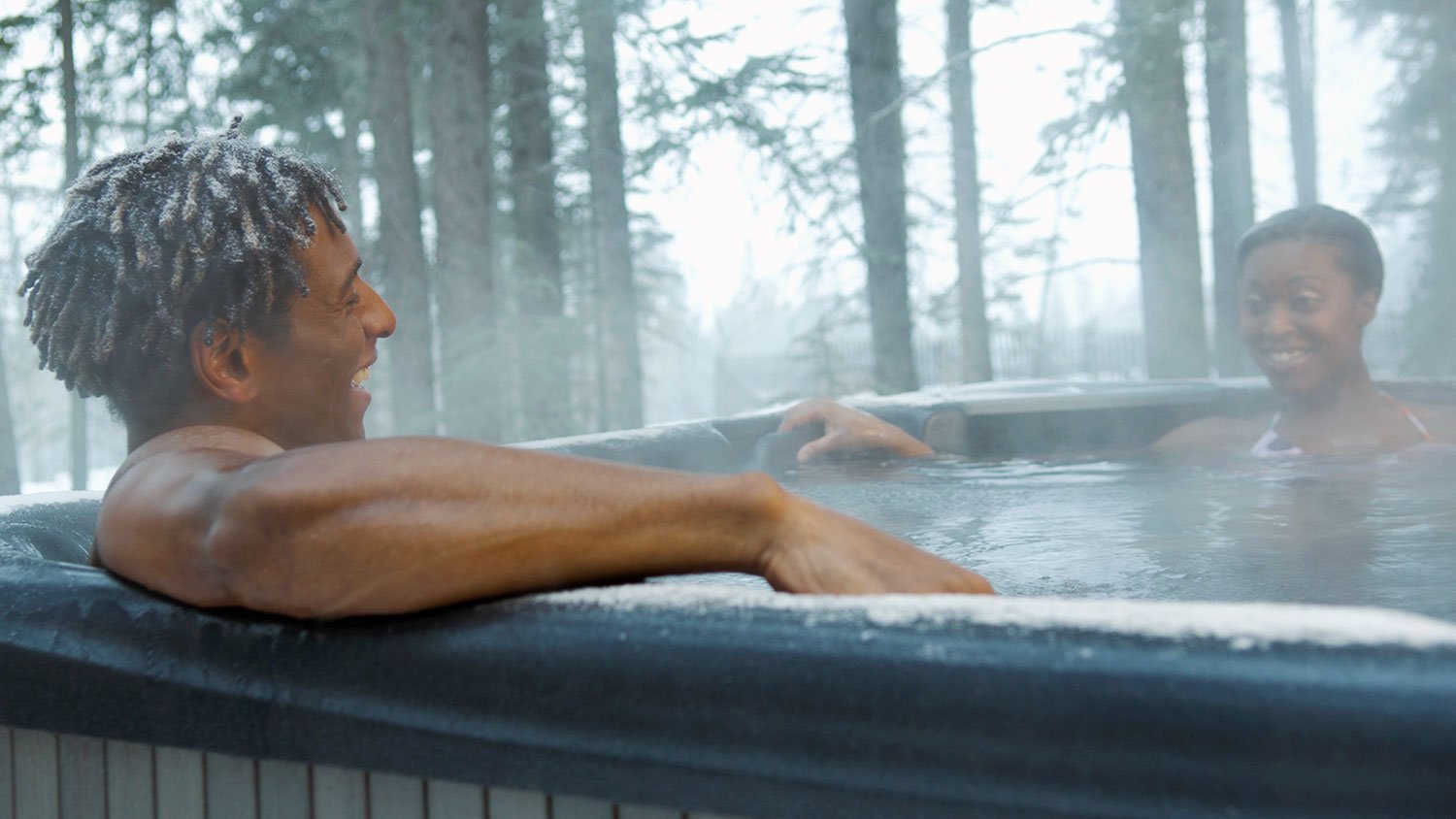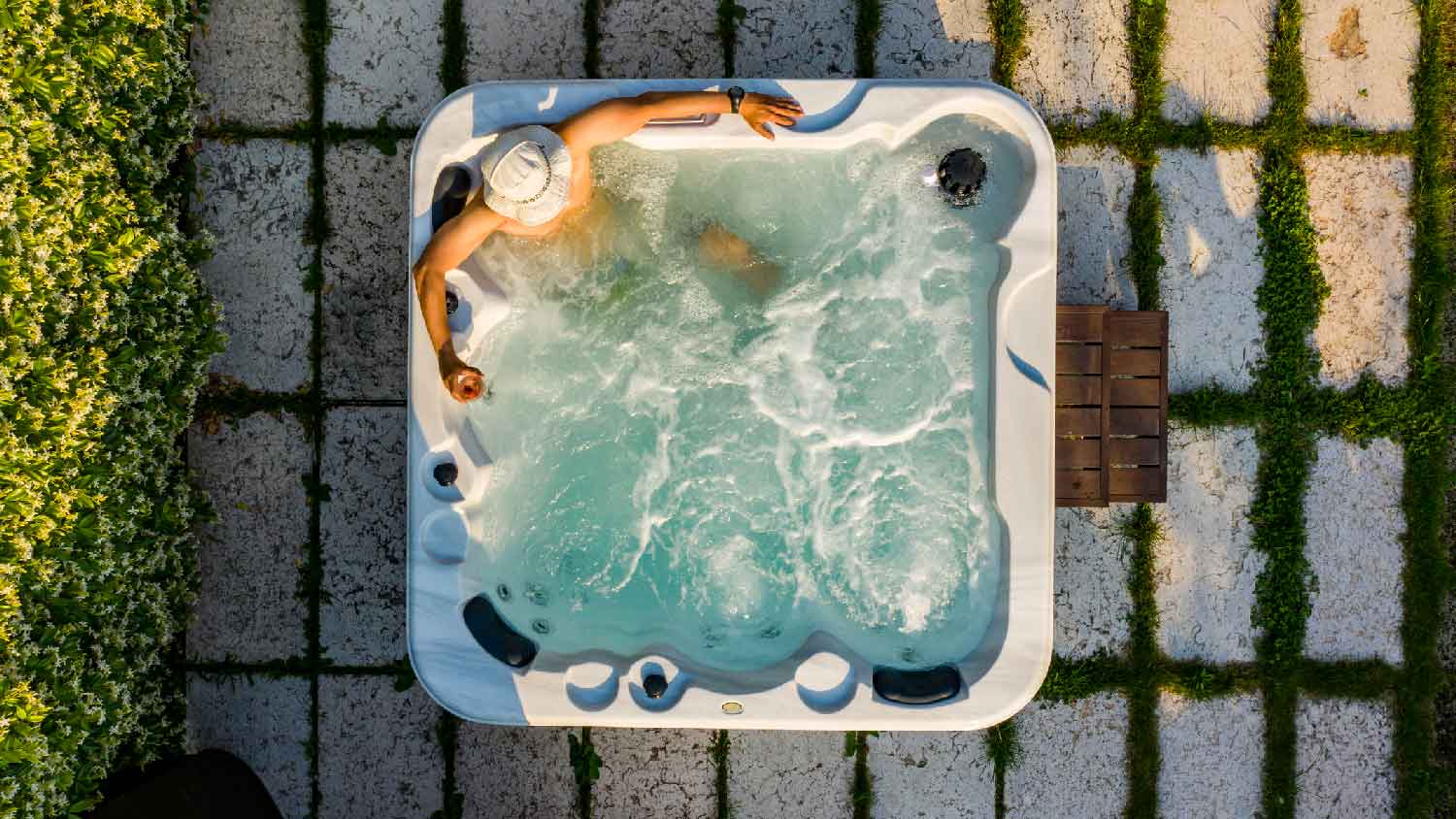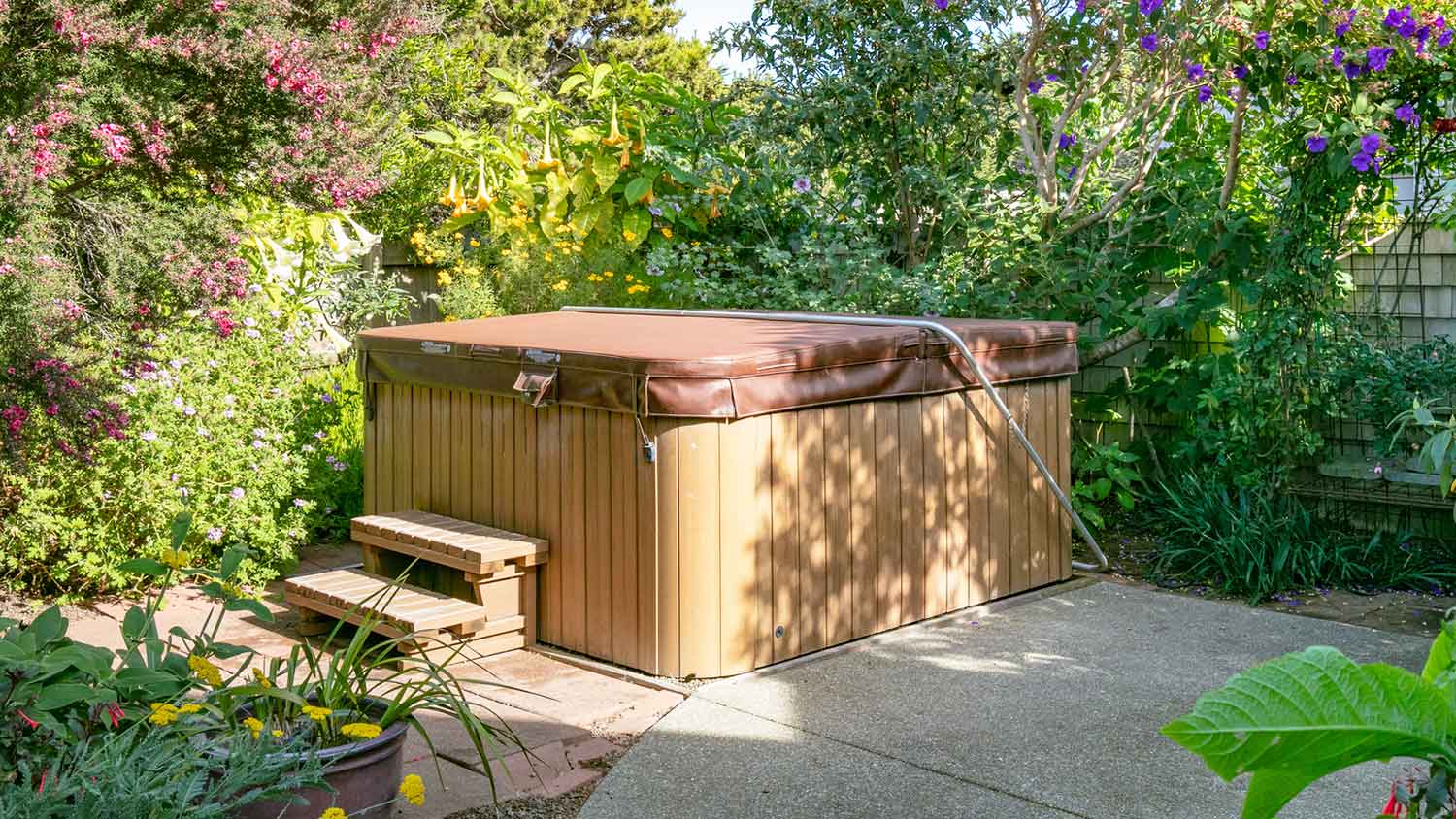13 Hot Tub Maintenance Tips to Maximize Relaxation Time
Keep your hot tub bubbling year-round


The hot tub is your oasis; a special place just steps from your door where you can dissolve all of life’s troubles and anxieties in a bubbling pool of hot water.
When you’re itching for the kind of relaxation only this beautiful appliance can provide, you don’t want to be messing around with the water chemistry, fishing out debris, or frantically searching for a hot tub pro in your area. Advance your knowledge and better care for your spa with these 13 hot tub maintenance tips.
1. Maintain the Water Chemistry
Maintaining the water chemistry of your spa is at the top of the list for a reason. Properly balanced water is safe to soak in, but unbalanced water can be hazardous to your health. Here are the ideal water levels you need to shoot for:
pH: 7.2–7.8
Total alkalinity: 80–120 ppm
Total hardness: 100–250 ppm (acrylic finish) or 250–400 ppm (plaster finish)
Chlorine: 1–3 ppm (if applicable)
Bromine: 3–5 ppm (if applicable)
To stay on top of your hot tub water maintenance, use test strips to check your water chemistry at least two to three times a week. In addition, sanitize your water weekly and use shock treatments. Use shock weekly if you’re only using the spa once a week or so, but for heavier use, add non-chlorine shock to the water after each hot tub session.
Once you get the hang of it, testing and balancing your water won’t take long. It’s simple but can help prevent unexpected hot tub repair costs. Proper water chemical levels help keep your equipment running smoothly at optimal levels, whereas poorly maintained water can cause extra strain on your filters, pumps, and other parts. Furthermore, water with unbalanced chemical levels can cause corrosion to your hot tub equipment and damage the walls.
Know Which Chemicals You Need
If your water levels are off during testing, adjust them using a pH increaser, pH decreaser, calcium hardness increaser, or water softener.
For sanitizer, you can choose between chlorine and bromine. Chlorine is the most commonly used chemical, and it kills contaminants faster than bromine. Some people prefer bromine because it doesn’t have a strong smell, but it costs more.
Finally, you’ll need either chlorine shock or non-chlorine shock. If you just threw a pool party or your water is looking cloudy, go with the chlorine shock. Otherwise, you can use non-chlorine shock, which reactivates the preexisting sanitizer in the water.
2. Monitor and Maintain Water Circulation
Run your hot tub 24/7 so your water is continuously circulating. This prevents bacteria from growing since they easily multiply in stagnant and warm environments. Monitor your water movement periodically, and if you notice a problem, get your circulation pump checked out by a local hot tub repair pro. Signs that there’s something wrong with your pump include odd grinding or gurgling sounds.
3. Good Filter Care Is Essential
When spa time arrives, you don’t want to think about anything but heating up and chilling out. That’s why the hot tub filter is one of the essential tools for keeping your hot tub clean and smoothly functioning.
But it can’t do its job without a little help.
Every two weeks, you should remove the filters to visually inspect them for any damage and to remove any large debris that has been caught inside.
Once a month, you should clean them. Hose them down and then spray with filter cleaner—or you can soak them overnight in a bucket filled with water and cleaner solution.
If your monthly cleaning only involves hosing the filters down, make sure to perform a deep cleaning every two to three months with an overnight soak.
4. Keep Extra Water Care Supplies on Hand
It’s a major bummer to prepare yourself for a hot soak only to discover you’ve run out of essential spa chemicals for your hot tub care. Keep extra supplies on hand—and store them somewhere warm and out of the reach of children and pets—so that you’re not running errands when you should be relaxing.
5. Keep a Regular Maintenance Schedule

To maintain proper performance and avoid hot tub problems, your hot tub needs to be cleaned and maintained regularly—not just during periods of frequent use. When it’s cold and wet, the hot tub is probably the last thing on your mind, so set a calendar reminder and keep a regular maintenance schedule so you don’t forget.
| Schedule | Hot Tub Maintenance Tasks |
|---|---|
| Daily | Check temperature, inspect the cover, and circulate the water |
| 2-3 times a week | Test the water and check sanitizer levels |
| Weekly | Balance the water, use shock, rinse the filter, clean the skimmer basket, and wipe down the cover, shell, and jets |
| Monthly | Deep clean the filter |
| Quarterly | Clean the hot tub cabinet and drain, clean, and refill the tub |
| Annually | Flush the plumbing and get a professional tune-up |
6. Drain and Deep Clean on a Regular Schedule
Keep our hot tub clean and safe to soak in by draining and deep cleaning it regularly. Over time, the water collects contaminants like body fluids, hair and skin care products, and cosmetics, which build up in the water, on the surface of the tub, and in the plumbing.
To banish them, drain the water, clean or replace the filter, and clean the shell with a special hot tub product, a non-abrasive commercial cleaner, or an at-home solution like vinegar.
If you’re a real hot tub fiend and use it frequently, perform the chore every six weeks—less regular users can do it every three to four months. It’s also the right move when you’re struggling to get the chemistry balance right—rather than continuing to add new products, just drain the whole thing and start from scratch.
7. Keep an Even Water Level
A hot tub that’s too full or too empty can quickly lead to all kinds of damage, overtaxing the pump and other components.
Follow these hot tub tips to keep an even water level at all times:
Fill the tub to just above the skimmer line to account for evaporation.
In the cold months, keep a hose nearby so you can easily top it off when the level starts to dip—since the water evaporates more quickly in cool, dry air.
8. Choose the Right Cover (or Two) and Keep It in Good Shape

Covering your hot tub when it’s not in use is essential for keeping out debris and pests, maintaining water level and temperature, and boosting the performance of bromine sanitizer.
Use these tips to select the right cover for your hot tub:
Make sure you select the right size—measure the length, width, and skirt length (the exterior depth), as well as the corner radius, using a framing square.
For extra protection (and extra savings on heat and chemicals), opt for both a floating cover and an external, hardtop cover.
For the cover to do its job, you need to stay on top of maintenance. The cover lives its life in a moist, hot, and dark environment, which is ideal for the growth of bacteria and mold.
Clean it every 90 days using a spray bottle with a solution of 9 parts water to 1 part bleach. Do so in broad daylight, so you can also take the opportunity to inspect it for any tears, warping, or leakage. If you find any damage, make sure to get hot tub cover repairs done as soon as possible.
Rushing to dip into a new hot tub is tempting, but think about the best entry and exit points for your new spa. Spa steps with a non-slip surface and handrail can make your hot tub safer.
9. Save Money With Off-Peak Heating
Heating represents the largest ongoing cost of hot tub ownership. You can cut down on those expenses by running the heater during off-peak hours and paying a lower rate. Just check in with your utility provider to find the right window of time in your area.
10. Close Air Control Valves When Not in Use
When in operation, the hot tub’s air control valves release heat from the water. Make sure they’re closed whenever you’re not taking a soak, to avoid wasting heat and racking up your energy bill.
11. Help Your Filter With Tennis Balls and Pantyhose
Hot tip: The tennis court and the dog park aren’t the only places you can use those fuzzy neon balls. They can also serve as the perfect complement to your hot tub’s filtration system. Place a few clean tennis balls into the tub and skimmer and let the soft felt soak up filmy contaminants before they reach the filter—and change them regularly.
Likewise, pantyhose are as perfect an accessory for your hot tub as they are for an elegant evening on the town. When it’s time to change your filters, use pantyhose to cover the lower return inlets and screen out any dirt and debris from entering inside and then recirculating in the tub.
12. Enzymes Are on Your Side
There are a variety of hot tub treatment enzyme products on the market, which mobilize these handy proteins to break down organic material that accumulates in the water. Use them to prevent your tub from developing the dreaded scum line and to get the most out of your filter and sanitizer.
13. Know When to Winterize

If you use your hot tub year-round—or if you don’t mind keeping on top of maintenance even during periods of infrequent usage—there is no need to winterize.
But if the tub will be sitting untended in a summer house for months at a time, or you’d simply like to avoid the extra chores during the cold months, make sure the water is totally drained from the basin, pipes, and jets before you close up shop for the season.
C.E. Larusso contributed to this piece.





- How to Clean a Hot Tub Filter Properly
- How Long Does a Hot Tub Last?
- How Does a Hot Tub Work Its Magic?
- Can You Put a Hot Tub in Your Basement?
- 8 Must-Know Tips for Installing an Indoor Hot Tub
- Replacing vs. Refurbishing a Hot Tub: What You Should Know
- What’s the Ideal Hot Tub Temperature for You?
- 7 Types of Hot Tubs to Add to Your Home or Backyard
- 24 Hot Tub Deck Ideas for a Backyard Paradise
- Are Hot Tubs Worth It? Pros and Cons Explained











